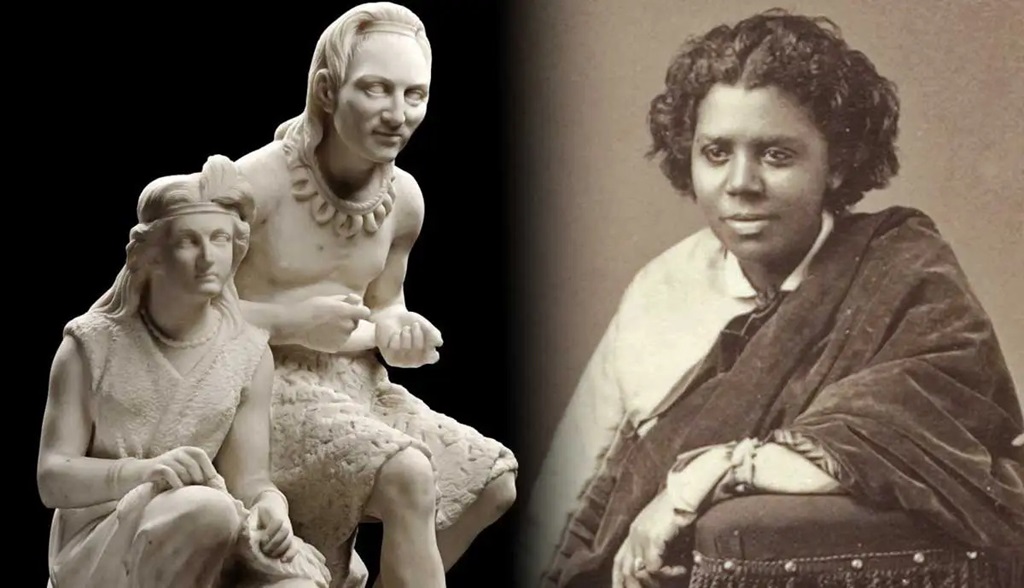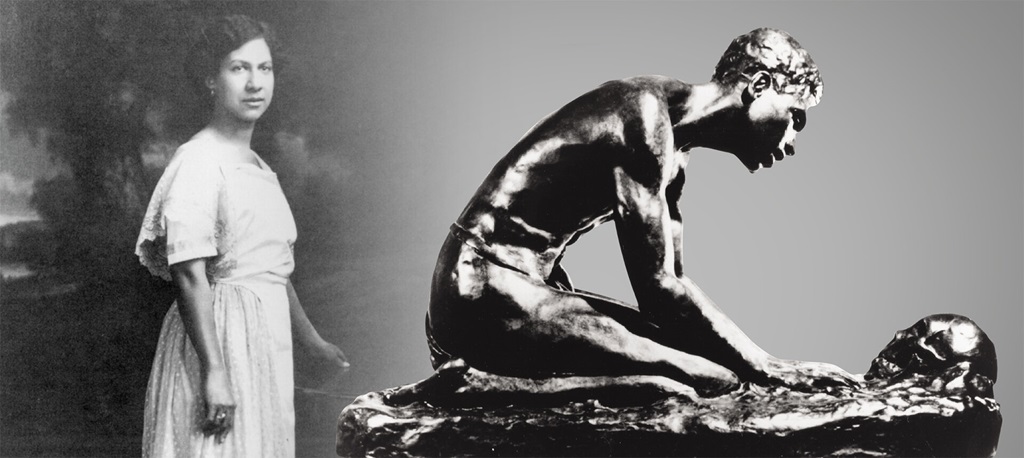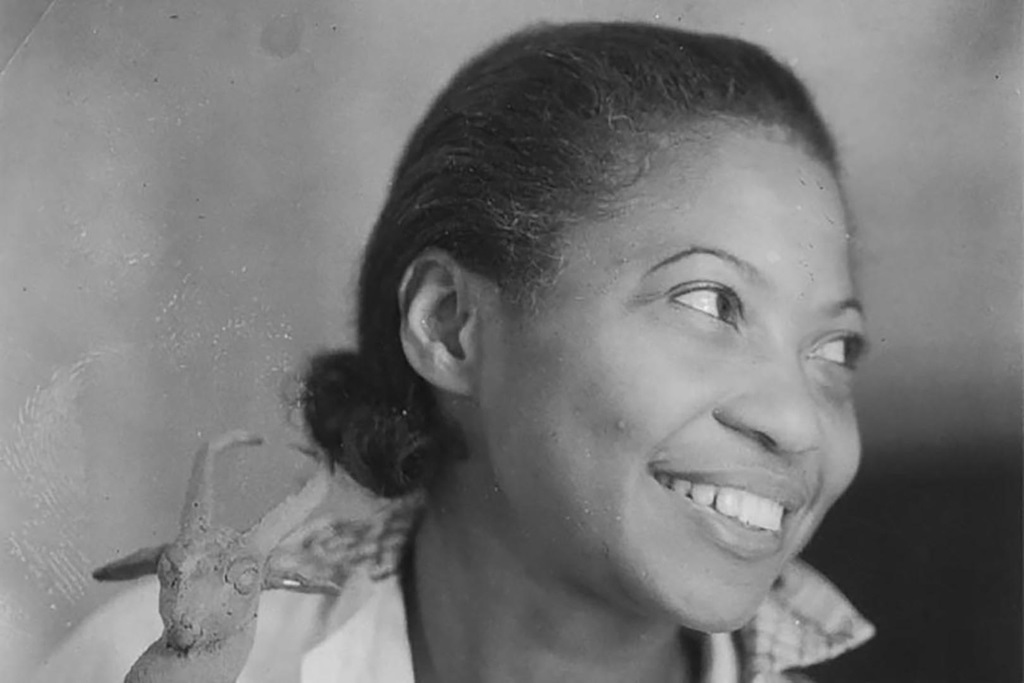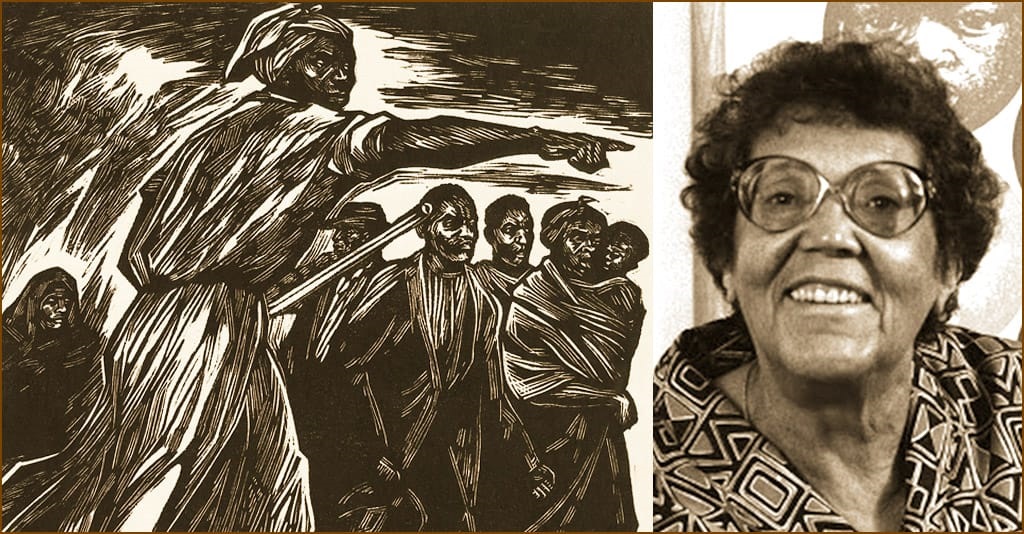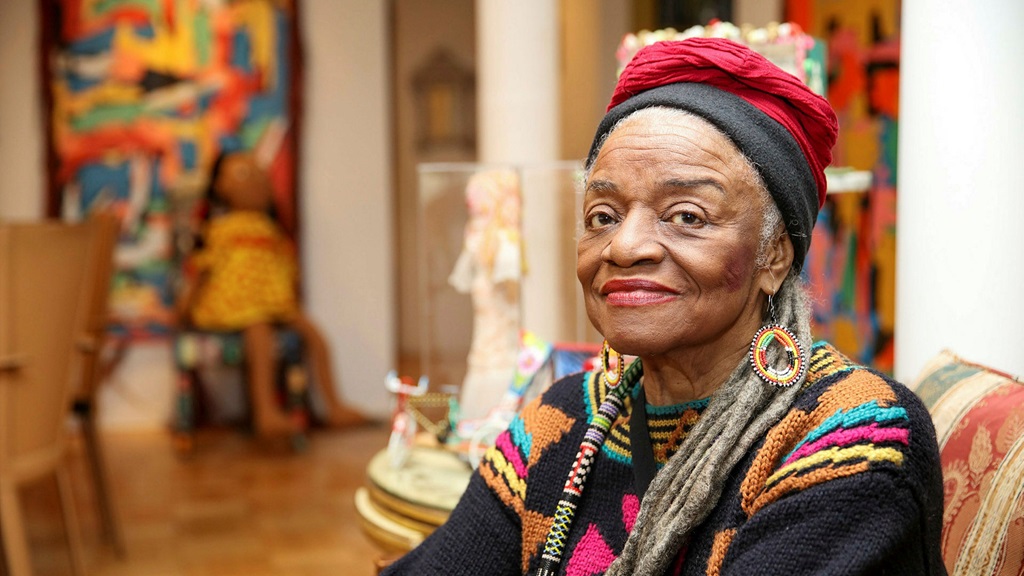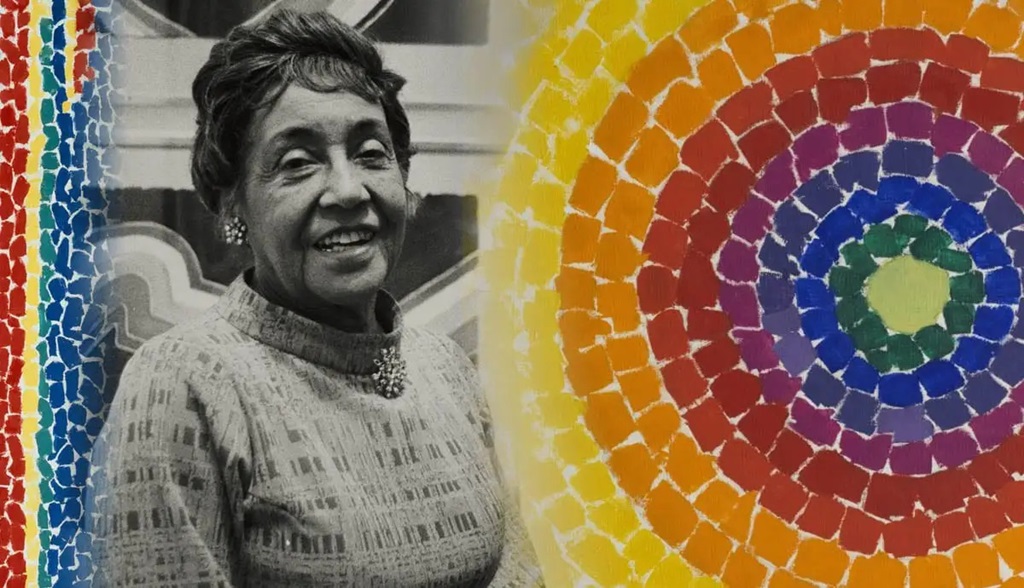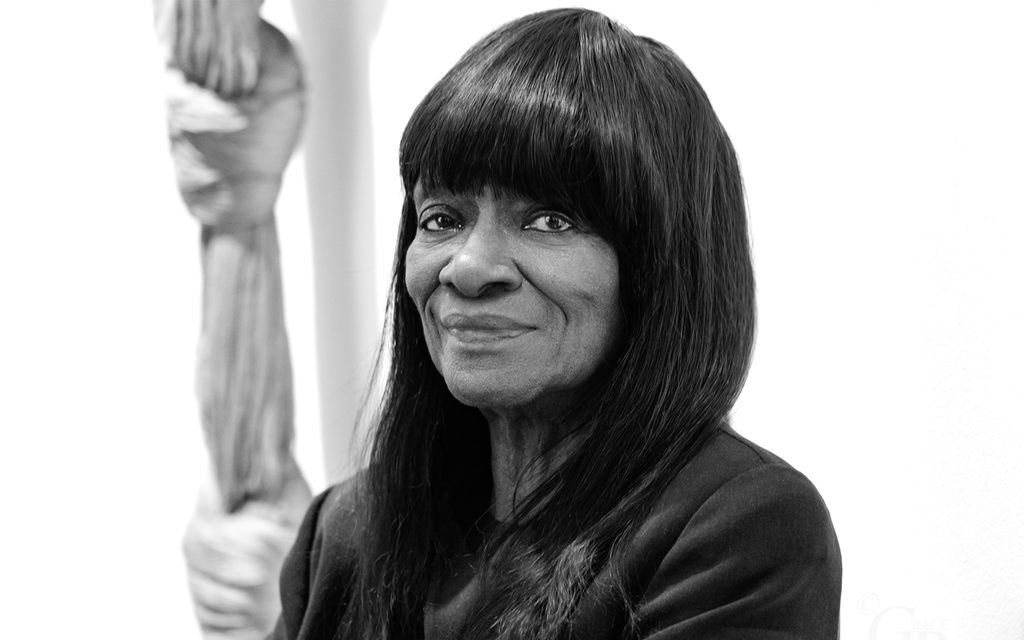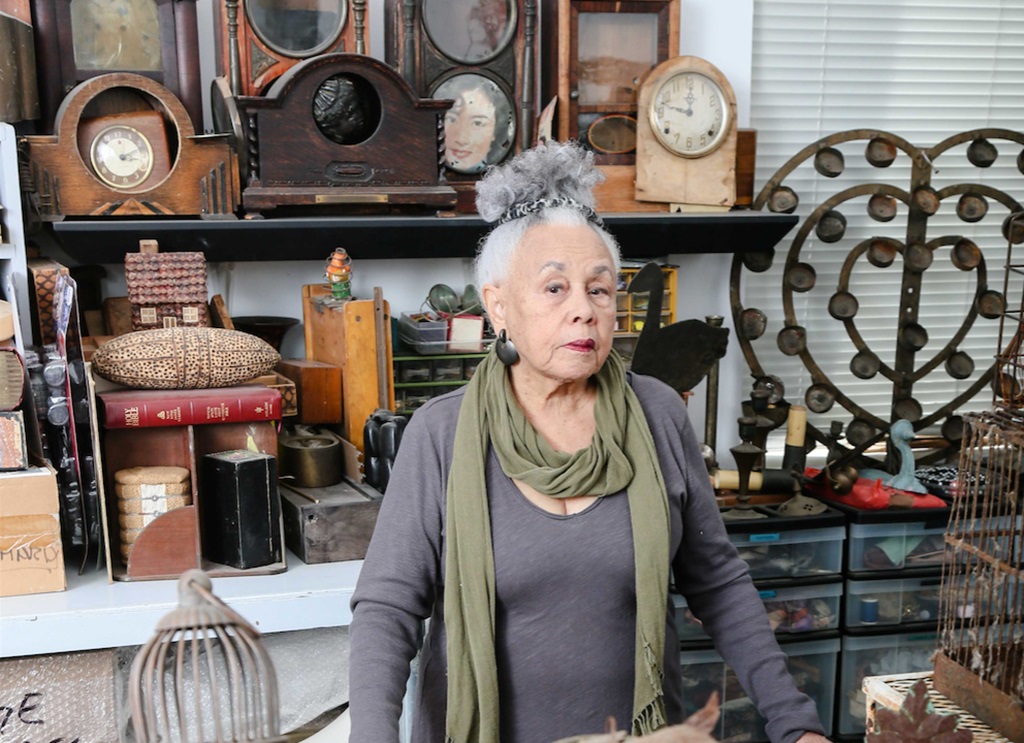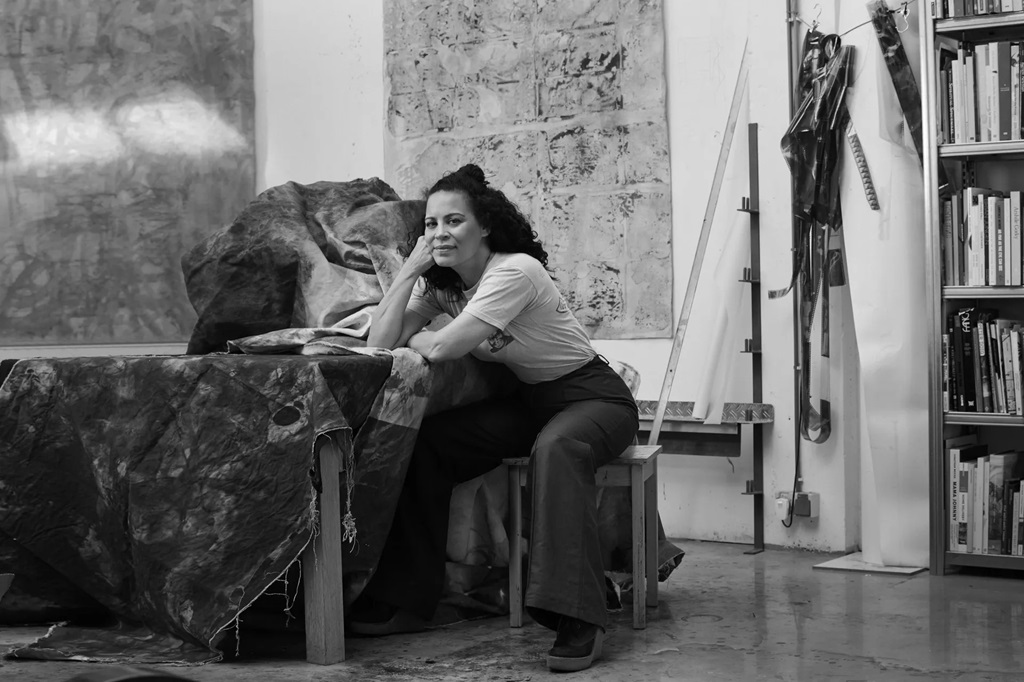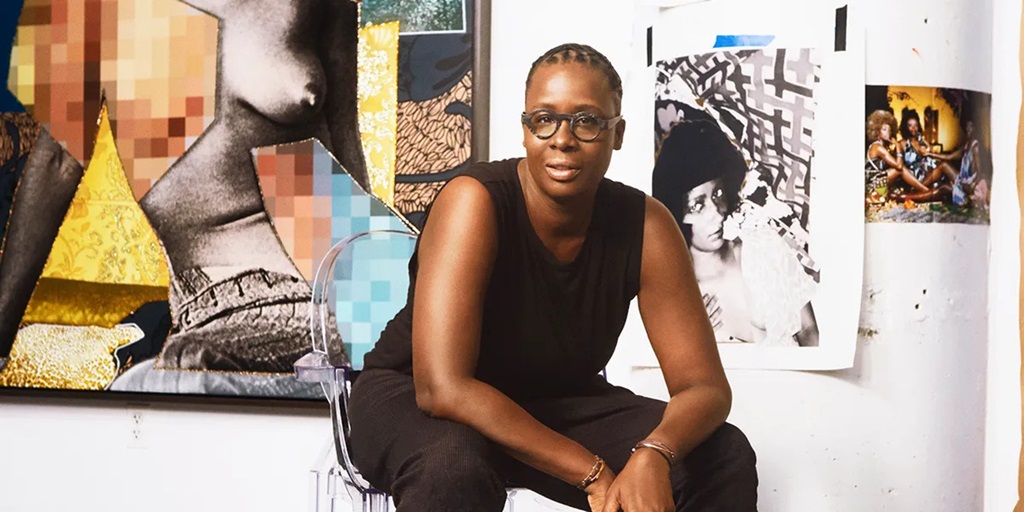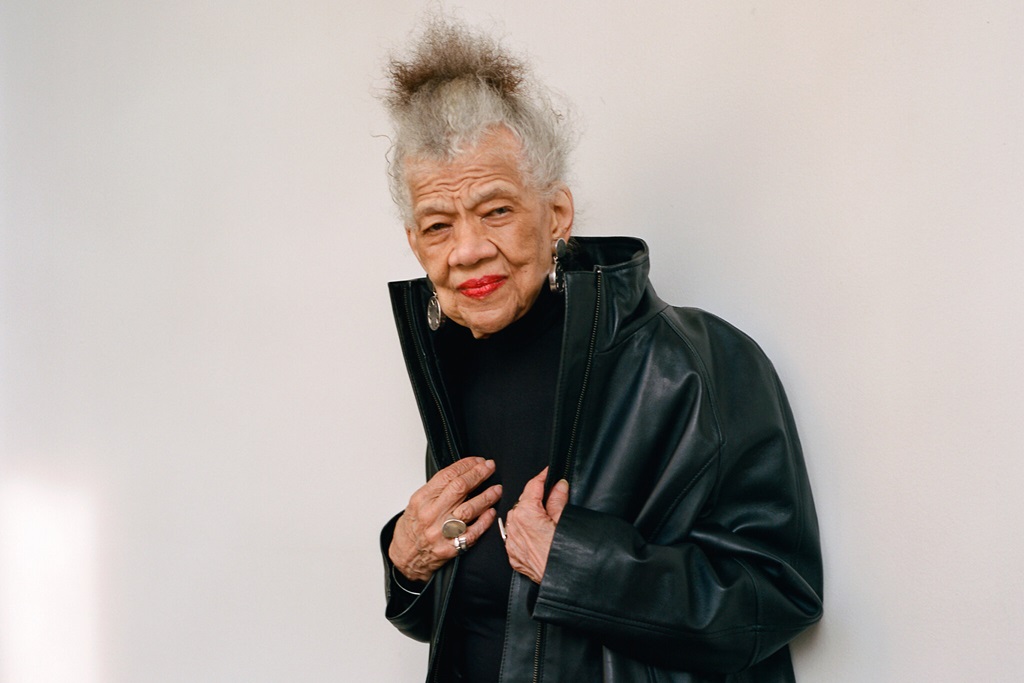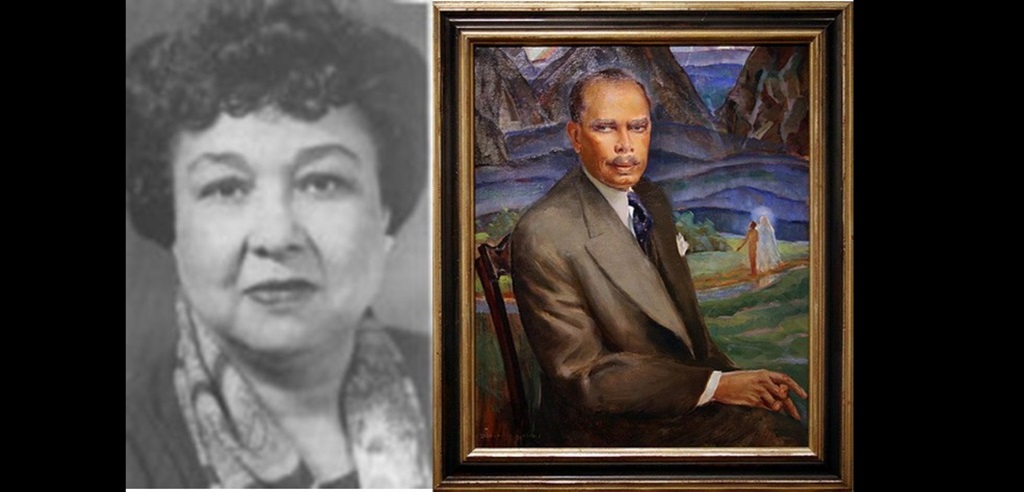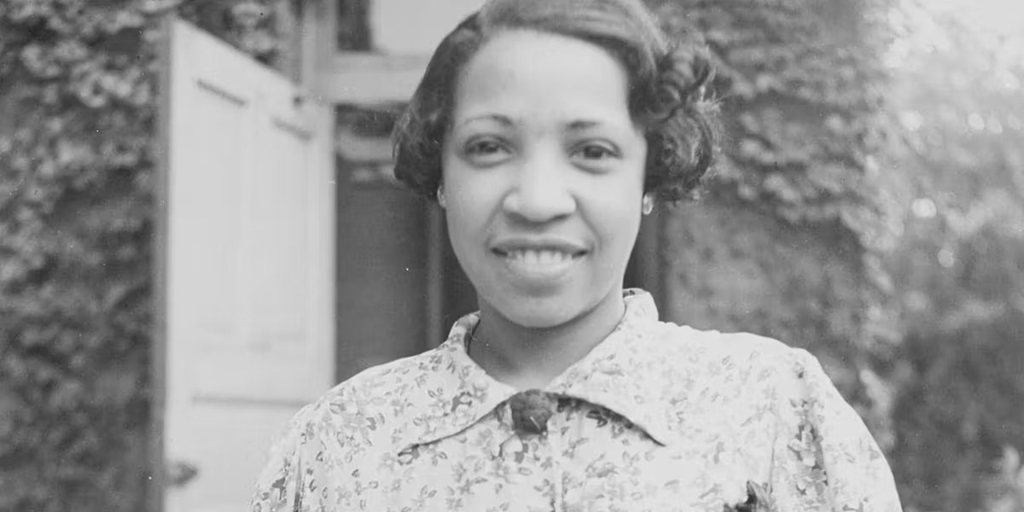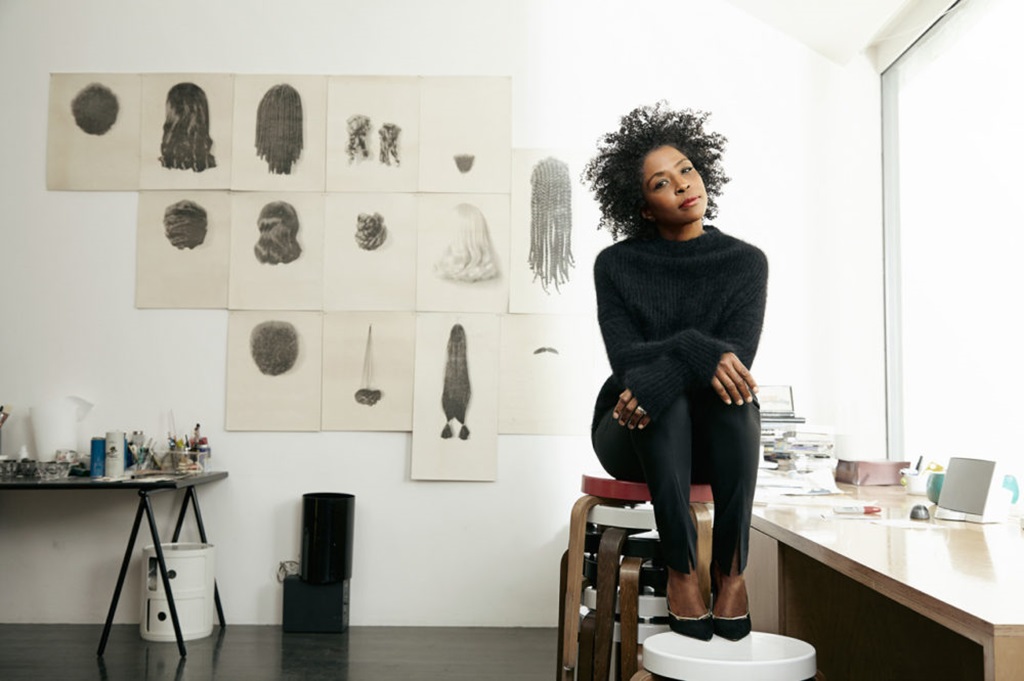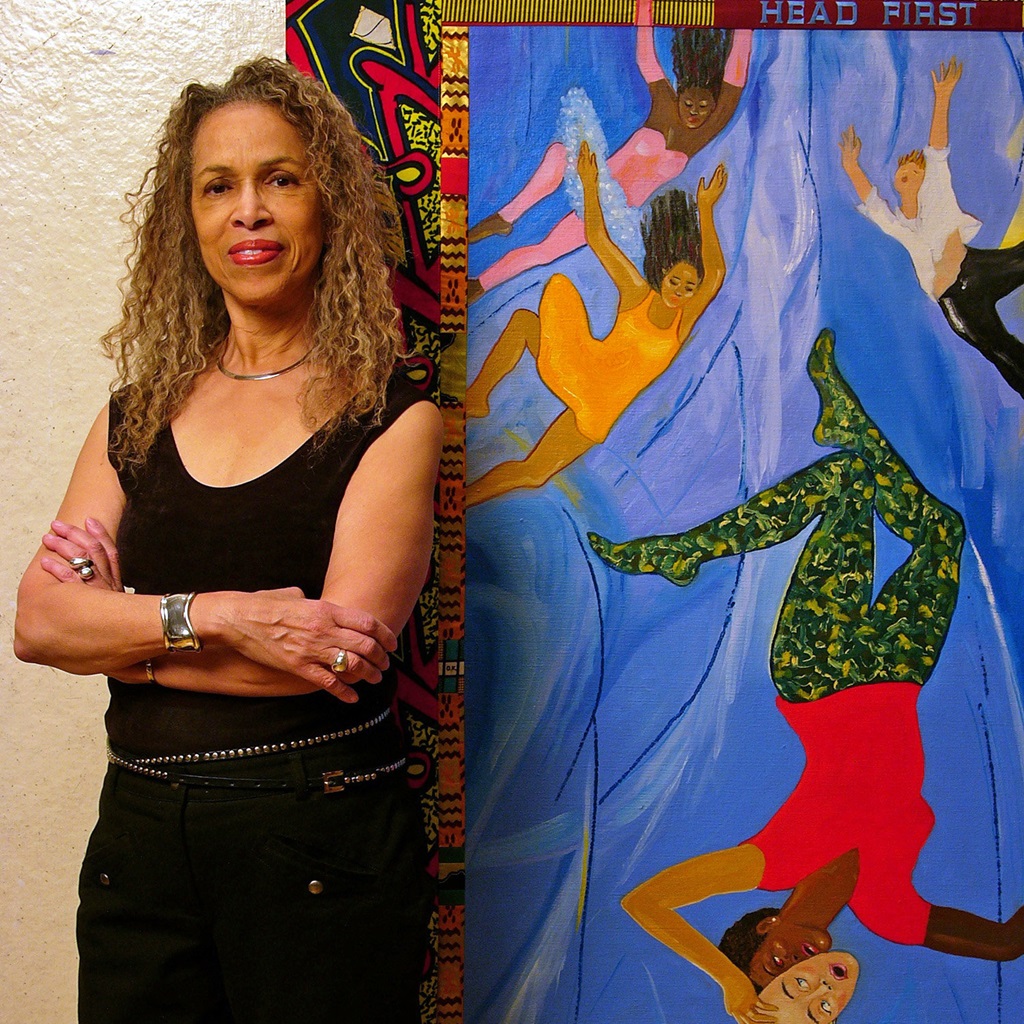The art world has been enriched by the contributions of black female artists throughout history. Despite facing numerous obstacles, these artists have created influential works that inspire generations of artists and art lovers. From the pioneers of the 19th century to the innovative contemporary creators, here are 18 famous black female artists who have significantly impacted the art world. Their works have challenged societal norms and provided a unique perspective on various themes, including race, gender, and identity. These artists have made an indelible mark on the art world and continue to be celebrated for their outstanding achievements.
1. Edmonia Lewis
Edmonia Lewis was the first black woman recognized as a significant international sculptor. Born around 1844, Lewis overcame barriers of race and gender to achieve artistic success in the 19th century. She is best known for sculptural works depicting influential blacks and Native Americans. Her most famous pieces include Forever Free, which represents formerly enslaved people, and Death of Cleopatra. Lewis’ neoclassical style and emphasis on ethnic themes paved the way for future generations of black artists.
2. Meta Vaux Warrick Fuller
Meta Vaux Warrick Fuller was an innovative sculptor active during the Harlem Renaissance. Born in 1877, Warrick first achieved acclaim in Paris, winning honors at the World’s Exposition of 1900. She was deeply interested in capturing the humanity and emotions of her subjects, often creating provocative works addressing racial themes. Famous pieces like Ethiopia Awakening and Soliloquy established her as one of the era’s premier black artists. Warrick later opened her studio in Philadelphia, inspiring many future minority artists.
3. Augusta Savage
The trailblazing work of Augusta Savage pushed boundaries in the 1930s. As an influential artist, teacher, and arts activist, Savage promoted black culture through her stunning sculptures and helped artists pursue their talents. Her noteworthy sculptures, like Gamin and Lift Every Voice and Sing, realistically depicted black subjects. Savage overcame racism and a lack of resources to open her studio in New York during the Harlem Renaissance, offering arts education to youths with few other opportunities.
4. Elizabeth Catlett
Elizabeth Catlett’s long and impactful career as a printmaker and sculptor spanned more than six decades. Born in 1915, she overcame gender and race barriers throughout her artistic journey. In the 1940s, she began focusing on sculptural works centering on black women’s experiences, with pieces like Mother and Child showing their strength and endurance. Later, prints and sculptures addressed issues like poverty and injustice. Catlett’s advocacy for affordable art led her to create widely accessible works, cementing her legacy as an influential political artist.
5. Faith Ringgold
Contemporary artist Faith Ringgold is recognized as one of the most inventive black female artists today. Best known for her unique painted story quilts, Ringgold’s imaginative works fuse craft traditions with modern styles. Her quilts address race, gender, and identity through fictional narratives. Works like Tar Beach portray black experiences using the medium of quilted fabric. Now in her 90s, Ringgold’s teaching and activism also inspire future generations of artists.
6. Alma Thomas
Alma Thomas, a pioneer of abstract expressionism, broke new ground with her colorful, rhythmic paintings. Thomas began painting at age 80 after retiring from a long career as an educator. Diagnosed with arthritis, Thomas developed a new artistic style using broad brush strokes and dynamic patterns. Works like Mars Dust and Red Azaleas Singing and Dancing Rock and Roll Music reveal her innovative, playful approach. Thomas was the first black woman to have a solo exhibition at the Whitney Museum, highlighting her contributions to modern abstract painting.
7. Barbara Chase-Riboud
The renowned career of Barbara Chase-Riboud includes acclaimed achievements in poetry, fiction, and visual arts. Her abstract sculptures in bronze, silk, and other materials exemplify her form, texture, and representation interests. Works like The Cape and La Musica draw on pop culture, African tradition, and historical female figures. Chase-Riboud is also an accomplished novelist and poet, significantly contributing to multiple artistic fields during her career.
8. Betye Saar
Assemblage artist Betye Saar is known for her groundbreaking found object sculptures addressing black identity and stereotypes. A significant figure in contemporary art since the 1960s, her influential works fuse cultural critique with personal memory. Early pieces like The Liberation of Aunt Jemima subverted racist imagery, while later installations explored spiritual traditions and family history. Now in her 90s, Saar’s continuing work highlights the power of objects to convey a deeper meaning about society.
9. Howardena Pindell
Howardena Pindell’s abstract canvases have made her a leading contemporary painter. Pindell’s early figurative works dealt with racism and the black experience. Influenced by a traumatic racial assault, she began experimenting with abstraction using hole-punched dots on canvas. Works like Autobiography combine painting with personal memory and collaged papers. Pindell’s long career as an artist, curator, and professor has cemented her significance as a black feminist art pioneer.
10. Ellen Gallagher
Ellen Gallagher is a contemporary American artist known for her evocative multimedia works fusing painting, collage, and video installations. Her pieces blend everyday materials like plastic, paper, and found objects. Works like DeLuxe draw on advertising imagery of black women to address issues of race and gender. As an acclaimed painter, printmaker, and sculptor, Gallagher’s work often explores identity, colonial history, and pop culture. Her innovative collage and mixed media practices have expanded notions of black representation.
11. Mickalene Thomas
Mickalene Thomas is a prominent contemporary artist and photographer celebrated for vivid portraits of black women. Thomas’ elaborately decorated paintings exude a bold, confident female gaze, as seen in pieces like Le déjeuner sur l’herbe: Les Trois Femmes. Her aesthetic draws on art history and her long-standing muse – her mother. Thomas also photographs black women as subjects of desire, empowerment, and beauty, creating provocative works celebrating identity. Her photography and mixed media artworks have propelled her to the forefront of black feminist artists.
12. Kara Walker
The courageous work of American artist Kara Walker explores race, gender, and violence through cut-paper silhouettes and massive installations. Her graphic works confront disturbing antebellum imagery and racist stereotypes, forcing viewers to acknowledge dark chapters of history. Her controversial pieces include highly stylized silhouettes such as Gone, An Historical Romance of Civil War, and her recent massive installation, Fons Americanus, displayed at London’s Tate Modern. Walker’s confronting and thought-provoking artworks shine a light on enduring cultural issues.
13. Lorraine O’Grady
The conceptual performance art and photography of Lorraine O’Grady addresses black female identity with radical wit. Her persona, Mlle Bourgeoise Noire, famously crashed 1980s art openings wearing an elaborate gown while shouting poetic verse, confronting exclusion in the art world. Works like Miscegenated Family Album use O’Grady’s mixed heritage to explore social constructs of race and gender. Fusing autobiography and cultural critique, O’Grady’s humorous, conceptual persona performances broke new ground.
14. Laura Wheeler Waring
Laura Wheeler Waring was a distinguished portraitist known for elegant paintings of prominent black figures. A major artist of the Harlem Renaissance, Waring portrayed notable individuals like W.E.B. Du Bois and Marian Anderson, conveying their dignity and strength. Her unique personal style fused impressionism, realism, and modernism to capture the humanity of her subjects. Though not widely recognized in her lifetime, Waring’s sensitive portraits are an essential record of accomplished 20th-century black Americans.
15. Toyin Ojih Odutola
Contemporary artist Toyin Ojih Odutola is acclaimed for intricate figurative drawings exploring race, class, and identity. Using vivid pastel portraits, she imagines fictional aristocratic Nigerian families in works like The Treatment and To Wander Determined. Odutola’s arched figure drawings on printed backgrounds subvert Eurocentric conventions, offering an inventive take on black representation. Her recent charcoal portraits’ epic scale and visual storytelling have cemented her as a rising art world star.
16. Loïs Mailou Jones
Loïs Mailou Jones was a prolific painter whose career spanned over seven decades. Influenced by African tribal art, she integrated African aesthetics with elements of Cubism and other modern styles. Works like Les Fetiches portrayed bold African masks and carvings through a modernist lens. Her famous palette knife paintings captured the vibrancy of African textiles and patterns. During segregation, Jones’ teaching at Howard University nurtured generations of young black artists.
17. Lorna Simpson
The photography and multimedia artworks of Lorna Simpson explore black identity from new perspectives. Simpson’s striking early work combined text and black-and-white photos to shift how black women were represented visually. More recent video installations feature her collaged archive images, questioning perception and memory. Bold explorations of gender, culture, and history have positioned Simpson as an influential contemporary artist over her three-decade career.
18. Emma Amos
Emma Amos fearlessly confronted issues of race and gender through her powerful figurative paintings and prints. One of the only female members of the Spiral artist collective in the 1960s, she boldly addressed racism and sexism in pieces like the provocative lithograph Eva the Babysitter. Amos merged expressionism, printmaking, and photo-silkscreening to portray black women’s experiences in works like Tightrope. Emma Amos created insightful, socially engaged artworks celebrating black womanhood over her six-decade career.
These women’s creative vision and perseverance opened doors for future generations of black female artists. Their works elevated overlooked stories, confronted painful issues, and portrayed the richness of the black experience. These 18 famous black female artists overcame immense challenges to fulfill their artistic passions.
Conclusion
The groundbreaking artworks of these black women opened doors, shaped careers, impacted communities, and changed perceptions. Their fearless creativity in the face of racism, sexism, and other obstacles demonstrates their fortitude and pioneering spirit. From 19th-century trailblazers to contemporary innovators, these 18 famous black female artists of descent produced meaningful, socially engaged art that enriched America’s cultural heritage. Their works continue to inspire audiences, students, and fellow artists worldwide.
Frequently Asked Questions
Who was the first famous African American female artist?
Edmonia Lewis was the first African American woman to gain significant international recognition as a fine artist in the 19th century. She overcame substantial racial and gender prejudice to have a successful career as a neoclassical sculptor.
Which black female artists were involved in the Harlem Renaissance?
Influential artists like Meta Vaux, Warrick Fuller, Augusta Savage, Laura Wheeler Waring, and Palmer Hayden made significant contributions during the cultural flowering of the 1920s Harlem Renaissance.
What techniques did Elizabeth Catlett use in her sculptures?
Elizabeth Catlett’s stone, wood, and bronze sculptural works draw on indigenous Mexican art traditions like wood carving. Her figures convey emotion and resilience through simplified, angular forms.
Why was printmaking an essential technique for many black women artists?
Restricted access to traditional fine arts education led many black women to embrace printmaking as an adaptable, affordable medium. Artists like Elizabeth Catlett, Betye Saar, and Emma Amos used prints to create multiples, making their art more available.
How did Faith Ringgold push artistic boundaries with her quilts?
Faith Ringgold combined the quilting tradition with modernist visual styles and personal storytelling. This innovative mixed media approach conveyed black history and experience in new, dynamic ways.
What sculptural materials did Barbara Chase-Riboud frequently utilize?
Barbara Chase-Riboud created abstract sculptures in media like polished bronze, silk threads, and cast aluminum. She is recognized for her inventive combinations of materials.


